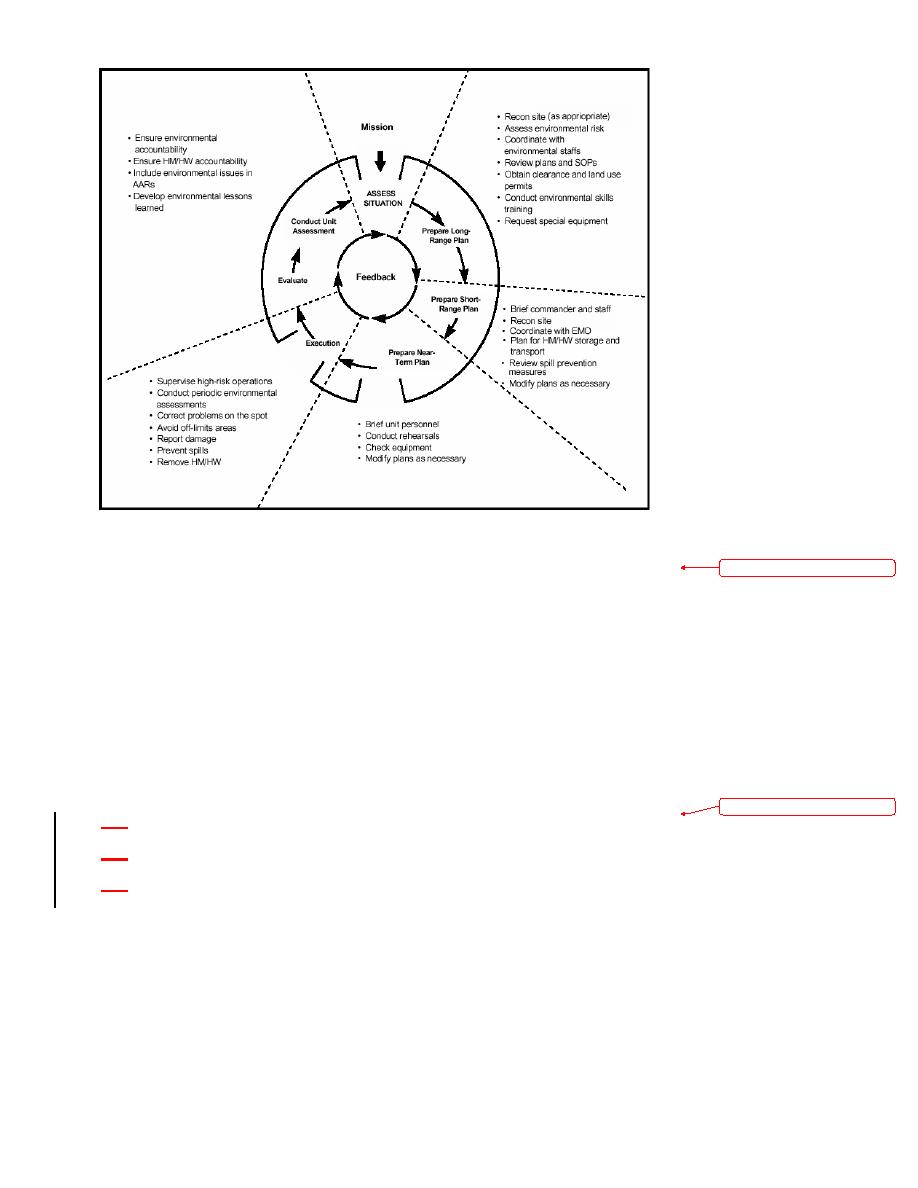
|
|

|
||
 Figure 2-1. Integrating Environmental Considerations Into Unit Planning/Training
a. Assessment. The planning process begins with assessment. In-depth assessment determines a
strategy to improve training proficiency on specific weaknesses and plan sustainment training on
demonstrated strengths. Assessment links the evaluation of completed training to the planning of
upcoming training. Commanders must assess the unit's internal and overall status of the environmental
training program and unit proficiency.
b. Long-Range Planning. At the battalion level, long-range planning starts with unit assessment and
is the basis for the long-range calendar. Resources, such as major training areas, ammunition, and fuel,
are allocated, and shortfalls are identified. The long-range plan synchronizes supporting units and
agencies so that effective training events can be properly executed. Platoon leaders use risk
management, review SOPs, and ensure that the personnel receive the correct tools to avoid/mitigate
environmental damage. Environmental considerations are addressed, and methods are developed to
overcome problems so that effective training can be accomplished. Items that require an environmental
focus during this phase include the following:
Conducting a reconnaissance of the training site.
Assessing the environmental risk.
Coordinating with the installation environmental staffs.
2-2
|
||
 |
||